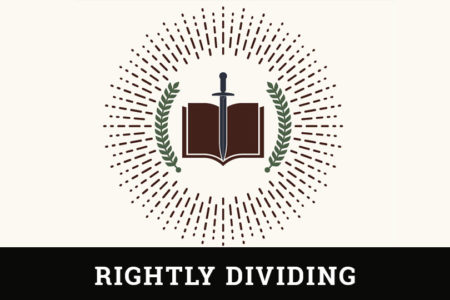Try It—You’ll Like!
For many of us, food is an emotional experience. The sights and aromas of various food items evoke wide-ranging passions, both positive and negative. It is not uncommon to observe grimaces and other contortions as people view new or different foods. It is a shame that some people are so reluctant to sample unusual fare. If they did, they would probably find that some foods really aren’t as bad as they thought. In fact, sampling new food can be downright exciting.
In some of my diverse travels, I have had the privilege and opportunity of sampling many different ethnic foods. Eating some of these delicacies has provided me with greater insight into the diversity within the world that God has given us.
Several years ago, I was the guest of some Mexican friends for a genuine Mexican dinner. Grandma Carrera is the family matriarch—mother of eight adult children and grandmother of numerous grandchildren, many of whom were in attendance. We were seated at one long table that extended from the dining room well into the living room. Chairs lined both sides of the table, and the meal was served family style. I was seated with my wife at one end of the table, while the hostess was at the other end. She seemed to be a mile away. Shortly after the meal began, a commotion erupted on her side of the table. I wondered what the problem was. One of her children explained, “My mother insists that if you are going to eat a real Mexican meal, you must eat all the things we eat.” Now I was really curious. “Great, what do you want me to eat?” The response came in the form of a mumble: “Well, it’s pickled pig’s feet. I told her not to do this, that you are Jewish, and we don’t want to offend you.”
I thanked her for her sensitivity. It’s true, pig’s feet are not exactly kosher. However, I understand that Christ made all things clean. Smiling, I signaled to someone to send them down to me. As the bowl of gelatinous white things came into my vision, I could also see heads on both sides of the table lean forward and turn my way. All eyes seemed to be fixed on me. I helped myself to a fork full, accompanied by the sound of low moans. I must confess that I have not had pig’s feet since that encounter, but eating them set the stage for a wonderful day of fellowship. Since that time 17 years ago, a lot of Mexican and Jewish food has been shared. Eating those pig’s feet was a defining moment.
A similar incident occurred in the home of a Jamaican family who had invited me to lunch after a Sunday morning meeting. Arriving at their home, I immediately felt engulfed in their culture. I loved hearing the family speak with their unique accent. As we sat down to eat, I was informed that the “heat” in the food had been toned down in my honor. “So, what are we having?” I asked. The answer came swift and proud: “We were able to secure fresh goat.” Fresh Jamaican goat stew! I must say, it was not like anything I had eaten before. It was outstanding.
At yet another Sunday dinner, I dined with an East Indian family. Like the Mexican and Jamaican families, they were gracious and hospitable—brothers and sisters in Christ. They were also willing to keep the “heat” to a minimum. I never knew you could use curry in so many dishes. That, too, was delicious.
On each of these occasions, the individuals served food from their native country. They were proud of who they were and were able to explain their culture simply by serving the food they loved. Each time, serving the food was a labor of love. As I ate what they liked to eat, I was able to learn many things about them. And they, in turn, asked questions about my family and background. We were able to share ethnic cultural differences and learn about one another.
Eating the food of another culture gives us insight into the lives of the people of that culture. Jesus often ate with His disciples. In fact, the last chapter of the Gospel of John relates that the resurrected Jesus fixed breakfast for them as He taught them what love and commitment really are.
If you are interested in learning about the Jewish people, it would help you to taste some of our food. Many people enjoy the different colors, textures, and aromas emanating from the foods our people enjoy. Following are recipes for some of my favorite dishes. I have made sure that none of them contains “heat” to speak of, nor do I ask you to confront a meat product unfamiliar to you. I really would love to prepare these dishes for you, but since I cannot, you will have to step out in faith and give them a try. Some of these dishes I grew up with and consumed on various holidays; others are just part of our culture. After you try these recipes yourself, invite Jewish friends for dinner, and, as you break bread together, you may have the opportunity to bring the bread of life to them. You may want to use kosher ingredients, just to be safe. That would demonstrate sensitivity for your Jewish friend.
Classic Challah or Sabbath Bread is a double-braided, slightly sweet egg bread that reminds the Jewish people that God provided a double portion of manna while they were in the wilderness.
3 tbsp. yeast
1/3 c. oil
2 1/4 c. lukewarm water
4 eggs
1 tbsp. salt
9 c. flour
1/3 c. sugar
Dissolve yeast in water and let stand for 10 minutes. Add salt, sugar, oil, and eggs. Add flour, 3 cups at a time, beating well after each addition. Knead dough on a lightly floured board for approximately 7 minutes until smooth and elastic, adding flour as necessary, possibly up to 1 cup more. Place in a large greased bowl, turning the dough once so the greased side is on top. Cover with a clean, damp towel and let stand in a warm place to rise for 11/2 hours, or until double in bulk. Punch down completely so there are no air pockets. Divide dough into 6 equal portions; shape into ropes about 1” in diameter. Braid 3 ropes together to form a loaf. Repeat for a second loaf. Place on greased cookie sheets. Let rise again until double in size. Brush with glaze and sprinkle with sesame or poppy seeds. Bake at 350° for 30 minutes. Remove to racks to cool. (The Great Hadassah Cookbook, p. 156)
Mom’s Passover Rolls are made without leaven in observance of Passover. We used to call them air biscuits. At least they can hold meat for a sandwich.
2/3 c. water
1/4 tsp. salt
1/3 c. oil
1 c. matzo meal
1 tbsp. sugar
3 eggs
Bring the water, oil, sugar, and salt to a boil. Slowly add matzo meal, mixing as you pour. Let cool. Add eggs, beating after each addition. Drop by large spoonfuls onto a greased baking sheet. Bake at 350° for 45–60 minutes.
* These can also be formed into balls with wet hands.
Chicken Paprikash, a favorite in our home, was passed down from my mother’s Hungarian background.
1 cut-up chicken
2 chicken boullion cubes
1 onion, chopped
3 tbsp. tomato paste
paprika
Brown chicken and onion in oil. After they are browned, add boullion cubes and enough water to cover chicken. Simmer 10–15 minutes, add tomato paste and paprika to taste. Cook 1–11/2 hours. Serve with noodles or rice.
Kugel or Noodle Pudding is a side dish, rather than a dessert. It is often served with brisket.
12 oz. noodles
1/4 tsp. salt
3/4 c. sugar
4 eggs, well-beaten
3/4 c. raisins
1/2 c. butter, margarine, or schmaltz (chicken fat)
3/4 c. coarsely chopped walnuts
Cook noodles as directed; drain well. Add sugar, raisins, nuts, salt, and eggs. Melt fat in baking pan and pour the balance of the fat into the noodle mixture. Blend well and spread mixture in baking pan. Sprinkle evenly with cinnamon. Bake at 375° for 55 minutes or until browned. (Manischewitz Noodle package)
Michele’s Brisket is typically served on Sabbath or other special occasions. This recipe comes from a former neighbor and a wonderful cook.
4–5 lbs. first-cut only brisket of beef (or 3–5 lbs. point end)
1 1/2 tbsp. Worcestershire sauce
garlic powder
1 onion
1/2 c. chili sauce
celery leaves
1 beef boullion cube
Rub Worcestershire sauce on both sides of brisket and brown on both sides in skillet. Sprinkle with garlic powder. Place in baking dish with fatty side up. Cut up an onion; lay on brisket. Add celery leaves. Mix chili sauce with 1/4 cup water and pour over onion. Dissolve beef boullion cube in 1/2 cup water. Pour into pan with brisket. Seal baking dish tightly with foil. Bake at 300–325° for 3 1/2 hours. If desired, add peeled and cut-up potatoes after the first hour and a half.
Matzo Balls for Matzo Ball Soup, which is often referred to as “Jewish penicillin.” It is to be served in your favorite chicken broth and vegetables—usually onions, celery, and carrots. A definite taste of home and cure-all for what ails you!
2 tbsp. melted fat, butter, or oil
1 tsp. salt, if desired
2 large eggs, slightly beaten
2 tbsp. soup stock or water
1/2 c. matzo meal
Blend fat or oil and eggs together. Mix matzo meal and salt together. Combine these two mixtures and blend well. Add soup stock and mix until uniform. Cover mixing bowl and chill at least 15 minutes. Using 2- or 3-quart pot, bring 11/2 quarts of slightly salted water to a brisk boil. Reduce flame and into slightly boiling water drop balls approximately 1” in diameter from chilled mixture. Cover pot and cook 30–40 minutes. With soup at room temperature or warmer, remove matzo balls from water and place into soup pot. When ready to serve, allow soup to simmer about 5 minutes. Recipe makes about 8 matzo balls. (Manischewitz Matzo Meal package)
* If you decide to double or triple this recipe, be sure to allow ample water in pot for matzo balls to expand. Otherwise, you’ll have cannonballs!







